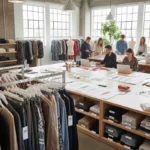
In our blog, we’ve already covered the basics of creating mood boards. However, it’s important to delve deeper into another crucial aspect of the creative process: inspiration. For designers, inspiration is an essential component that fuels creativity and drives innovative design. Designers often find inspiration from a variety of sources, including watching movies or shows, where the background and visual elements can significantly influence their creative process. Let’s explore the significance of inspiration and how it can profoundly impact a designer’s work.
The Role of Inspiration in the Creative Process
Inspiration is the lifeblood of creativity. It’s the spark that ignites new ideas and fuels the passion for design. For fashion designers, inspiration can come from a myriad of sources—nature, art, music, culture, travel, and even everyday life. This influx of ideas is what enables designers to push boundaries, think outside the box, and create groundbreaking work.
In the fast-paced and ever-evolving world of fashion, designers must continually find ways to stay ahead of trends and communicate their vision effectively. One indispensable tool in a designer’s arsenal is the professional fashion mood board. This visual aid helps designers organize their thoughts, experiment with new ideas, and present their concepts in a clear, compelling manner. In this comprehensive guide, we will delve into the intricacies of creating a professional fashion mood board, exploring its importance, components, and best practices.
What is a Professional Fashion Mood Board?
A professional fashion mood board, also known as an inspiration board, is a curated collection of images, textures, colors, and text that encapsulate the essence of a designer’s vision for a particular project or collection. It serves as a visual representation of themes, concepts, and inspirations, allowing designers to convey their ideas succinctly and effectively. The composition and arrangement of these elements is crucial for creating an impactful and cohesive presentation. A mood board can often take the form of a collage, bringing together diverse materials and images to express style concepts and design direction. Providing context for the visual elements—such as background information or narrative—helps communicate the story or inspiration behind the board and enhances the overall creative vision.
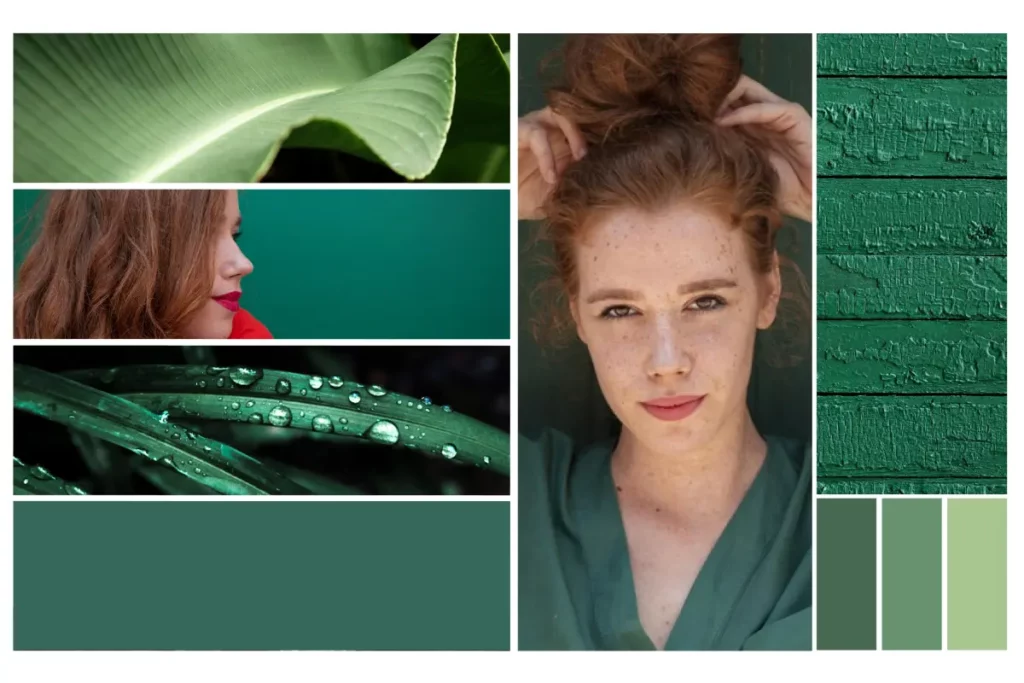
The Importance of a Professional Fashion Mood Board
- Inspiration and Creativity: Mood boards are a wellspring of inspiration, enabling designers to delve into diverse themes and concepts. They ignite creativity and foster innovation, serving as a visual playground where ideas can flourish.
- Showcase of Skills and Vision: Mood boards are used to showcase a designer’s skills, creativity, and ability to communicate their vision. They serve as visual tools to display and highlight your versatility to potential employers or clients.
- Clarity and Focus: By organizing visual elements coherently, mood boards bring clarity to the design process. They help designers concentrate on the central idea of their project, ensuring that the core vision remains consistent and sharp. Mood boards also help highlight the most important features or elements of a collection, such as key silhouettes, textures, or colors.
- Communication: A meticulously crafted mood board effectively conveys the designer’s vision to various stakeholders, including clients, team members, and collaborators. It acts as a visual language that bridges understanding and ensures everyone is on the same page. Being able to clearly explain the choices and reasoning behind the visual elements included in the mood board is crucial for transparency and storytelling. A well-crafted mood board is essential for developing a consistent and focused clothing line, ensuring that all design elements align with the overall vision.
- Efficiency: Mood boards enhance the efficiency of the design process. They facilitate quicker decision-making and help maintain the project’s trajectory, ensuring that timelines are adhered to and goals are met.
Components of a Professional Fashion Mood Board
1. Images
High-quality inspirational images form the cornerstone of any effective mood board. Selecting the right images and photos is crucial to effectively communicate the desired mood and concept, ensuring clarity and impact in your visual storytelling. These visuals can range from detailed photographs of fabrics and textiles to images from fashion shoots, runway shows, and even artistic pieces that resonate with the designer’s vision. Each image should be carefully selected to reflect the theme and aesthetic of the collection, contributing to a cohesive visual narrative.
2. Colors
The color palette is crucial in setting the tone and mood for the entire collection. Using well-chosen color palettes not only helps analyze trends and inspire design decisions, but also serves as an essential visual tool in collection planning. Selecting a range of complementary and contrasting colors helps evoke specific emotions and create visual harmony. A well-chosen color scheme can unify disparate elements and bring a sense of cohesion to the mood board, guiding the overall design direction.
3. Textures and Fabrics
Including swatches of fabric and texture samples adds a tactile dimension to the mood board, enhancing its richness and depth. Paying attention to details in textures and fabrics—such as intricate weaves, finishes, and handwork—can elevate the overall aesthetic and craftsmanship of the collection. These elements help designers and viewers visualize how the designs will feel and look when brought to life, and how different textures and fabrics can be used to represent various styles and shapes within the collection. The inclusion of textures and fabrics can significantly influence the overall sensory experience of the collection.
4. Typography
The choice of fonts and text plays a significant role in conveying the mood and style of the collection. Whether opting for elegant script fonts to evoke a sense of sophistication or bold sans-serif fonts for a modern and edgy look, typography adds another layer of meaning and helps to reinforce the thematic direction of the mood board.
5. Patterns
Patterns bring dynamism and movement to the mood board. These can include prints, weaves, or any repetitive design elements that are intended to be part of the collection. Patterns can add visual interest and complexity, making the board more engaging and reflective of the designer’s vision.
6. Silhouettes
Outlining key silhouettes is essential for conveying the shapes and forms that will define the collection. The shape of the silhouettes plays a crucial role in defining the overall look and feel of the collection, influencing how the design concept is perceived. Sketches or images of these silhouettes give a sense of the structural elements and overall design direction. Including silhouettes helps in visualizing the fit and flow of garments, contributing to a more comprehensive and detailed mood board.
7. Concept Words
Keywords or phrases that encapsulate the theme and direction of the project provide a verbal anchor for the visual elements. These concept words help articulate the core ideas and emotions behind the collection, offering a concise summary that complements the visual storytelling. Well-chosen concept words can highlight the key themes and emotions of the collection, ensuring that the mood board not only speaks through images but also through well-chosen language that highlights the intended message and aesthetic.
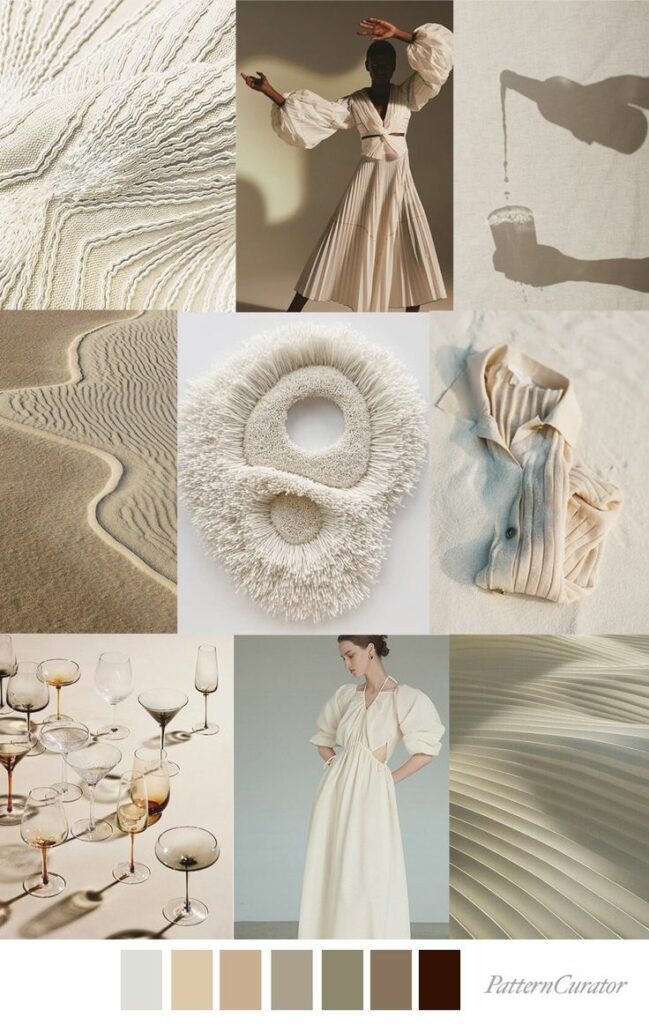
Fashion pattern – pinterest.com
Steps to Create a Professional Fashion Mood Board
Step 1: Define Your Concept
Before you begin collecting visuals, it’s crucial to have a clear concept in mind. Defining your design concepts and providing context for your collection—such as the background story, inspiration, or emotional narrative—will guide your mood board creation. Ask yourself the following questions:
- What is the theme or story behind your collection?
- Who is your target audience?
- What emotions do you want to evoke?
- What are the current trends in the fashion industry?
Having a solid concept will guide your selection of images, colors, and other elements.
Step 2: Gather Inspiration
Collect images and materials that align with your concept. You can find inspiration and draw inspiration from a wide range of sources, both traditional and unconventional, such as:
- Fashion magazines
- Online platforms like Pinterest, Instagram, and fashion blogs
- Art galleries and museums
- Nature and architecture
- Historical fashion archives
Ensure the images are high quality and relevant to your theme.
Step 3: Select a Color Palette
Choose a color palette that reflects your concept. Exploring different color palettes can help you discover new combinations and set the tone for your collection. Consider the psychological effects of colors and how they complement each other. Tools like Adobe Color can help you create harmonious color schemes.
Step 4: Incorporate Textures and Fabrics
Add fabric swatches and texture samples to your mood board. This will give a tactile dimension to your project, helping you visualize how the final designs will feel and move. Paying close attention to the details of textures and fabrics can elevate the overall quality of your mood board, showcasing the craftsmanship and intricacies that define your creative concept.
Step 5: Add Typography and Patterns
Select fonts that align with your theme and add any patterns that will be featured in your designs. These elements should enhance the overall mood and style of the collection.
Step 6: Outline Key Silhouettes
Sketch or find images of the key silhouettes that will define your collection. This gives a sense of the shapes and forms you are aiming for. Considering the shape of each silhouette can help you achieve your desired design direction.
Step 7: Arrange Your Elements
Start arranging your collected elements on a board, whether it be a digital mood board using tools like Adobe Illustrator, Photoshop, or Canva, or a physical board. Play around with the layout until it feels cohesive and balanced. Achieving the right balance and thoughtful composition in your arrangement will enhance the visual impact of your mood board and effectively communicate your concept.
Step 8: Add Concept Words
Include keywords or phrases that capture the essence of your theme. These words can serve as a verbal summary of your visual elements. Using concept words can also help highlight the main ideas and emotions you want to convey, making your mood board’s message clearer and more impactful.
Step 9: Review and Refine
Take a step back and review your mood board. Ensure that all elements align with your concept and that the board tells a coherent story. Make any necessary adjustments to refine the overall look. This review and refinement process highlights your ability to critically evaluate and enhance your creative work.
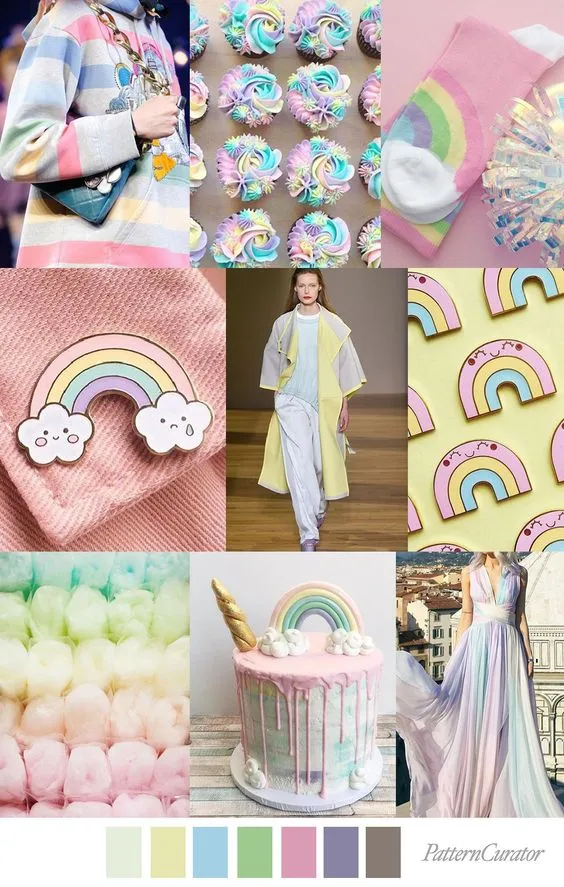
Fashion mood board – pinterest.com
Best Practices for Creating a Professional Fashion Mood Board
1. Keep It Simple
One of the key principles in creating a professional fashion mood board is simplicity. It’s important to avoid overloading your board with too many elements, which can lead to a cluttered and confusing presentation. Instead, focus on selecting high-quality, impactful images and materials that truly resonate with your vision. Quality over quantity ensures that each element has a purpose and contributes meaningfully to the overall theme.
2. Be Consistent
Consistency is crucial in maintaining a cohesive and professional-looking mood board. Ensure that all elements—images, colors, textures, typography, and patterns—align with your central concept and chosen color palette. This uniformity helps in creating a harmonious and unified board, making it easier to convey your vision clearly. Inconsistent elements can distract from the main idea and weaken the overall impact of your presentation.
3. Tell a Story
Your mood board should serve as a visual narrative that tells a clear and compelling story. Each element should contribute to this narrative, supporting the overall theme and concept of your project. Think of your mood board as a storyboard for your collection, where every image, color, and texture plays a role in unfolding the story you want to tell. This approach helps in engaging your audience and making your vision more relatable and understandable.
Additionally, your mood board is a powerful tool to express and communicate your personal style, allowing you to showcase your unique fashion preferences and aesthetic choices.
4. Stay Organized
Organization is key to creating a professional mood board. Arrange your elements in a visually logical manner that guides the viewer’s eye smoothly across the board. Group similar items together and create a visual flow that enhances the overall presentation. An organized layout not only makes the board more aesthetically pleasing but also helps in effectively communicating your ideas.
5. Seek Feedback
Sharing your mood board with colleagues, mentors, or trusted friends is an essential step in the creative process. Constructive feedback can provide new insights and perspectives that you might not have considered. It helps in identifying any weaknesses or areas for improvement in your mood board, allowing you to refine and enhance your vision. Regularly seeking feedback ensures that your project remains dynamic and well-rounded.
6. Be Flexible
Flexibility is an important attribute when creating a mood board. Be open to changes and new ideas as your project evolves. A mood board is not a static document but a living, breathing entity that can and should adapt to new inspirations and insights. Being open to adjustments ensures that your mood board stays relevant and continues to accurately reflect your evolving vision. This adaptability can lead to more innovative and refined outcomes in your design process.
Digital vs. Physical Mood Boards
Both digital and physical mood boards have their advantages and disadvantages. Digital mood boards offer the flexibility to easily add, remove, and rearrange elements. They also allow you to incorporate videos, making your mood board more dynamic and engaging. This multimedia capability helps better convey the visual and thematic concept of your project. Physical mood boards, on the other hand, provide a tactile experience and can be useful for hands-on brainstorming sessions.
Digital Mood Boards
|
Pros: |
Cons: |
|---|---|
|
Easy to edit and update. Convenient for sharing with remote teams. Access to a vast array of digital resources. Ability to include videos for a richer multimedia experience. Tools like Adobe Illustrator, Photoshop, and Canva offer advanced design capabilities. |
Can feel less tactile and personal. Requires access to digital devices and software. |
Physical Mood Boards
|
Pros: |
Cons: |
|
A physical mood board is tactile and engaging, allowing you to incorporate real fabric swatches and texture samples. Provides a hands-on, creative experience. |
Harder to share with remote teams. Difficult to update and edit. Requires physical storage space. |
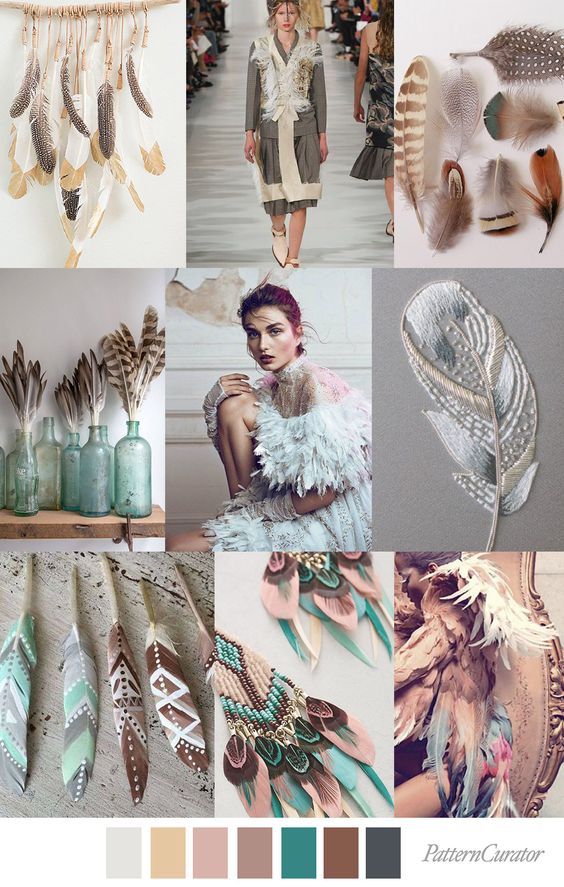
Fashion inspiration – pinterest.com
Creating professional fashion mood boards is an essential skill for any designer. It serves as a blueprint for your creative vision, helping you stay focused, inspired, and aligned with your goals. By following the steps outlined in this guide and adhering to best practices, you can master the art of mood board creation and take your design projects to a new level.
Remember, a mood board is more than just a collection of pretty pictures. It is a powerful tool for storytelling, communication, and inspiration. Including mood boards in your fashion portfolio can help you stand out to potential employers or clients by showcasing your creative process and versatility. Whether you choose to create your fashion mood boards digitally or physically, the key is to remain true to your concept and let your creativity shine. With practice and dedication, you will become proficient in crafting mood boards that not only impress but also guide your design journey effectively.



